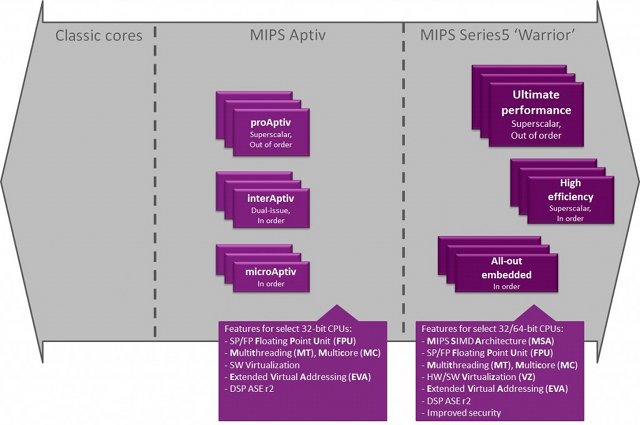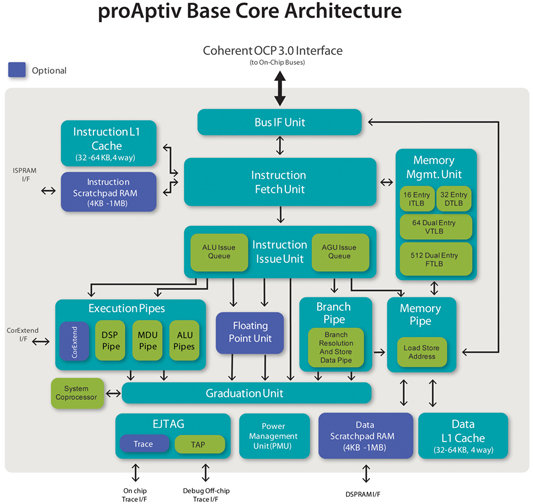Last year, MIPS announced Aptiv Cores, but since then, the company has been bought by Imagination Technologies, and they’ve recently announced updates to the family, as well as new MIPS Series5 ‘Warrior’ CPU cores during Imagination Summit in Asia. Before I write about the update to Aptiv cores, let me remind you of the 3 Aptiv families: proAptiv – High performance cores (3.5DMIPS/Mhz) to be used in SoC for smartphone, tablets, …. 1 to 6 cores. Roughly equivalent to ARM Cortex A15. interAptiv – Medium performance core (1.7DMIPS/MHz) for mainstream STB, digital cameras, mid-range smartphones. 1 to 4 cores. Equivalent to ARM Cortex A5 microAptiv – Low power MCU and MPU cores Imagination has added a small-footprint single-core version to the interAptiv family without the extra logic associated with multi-core coherency and L2 cache controller, as well as a floating point version to the microAptiv family for applications such as […]
MIPS Introduces microAptiv, interAptiv and proAptiv Cores
MIPS Technologies has introduced their new Aptiv generation of microprocessor cores divided into 3 families: proAptiv, interAptiv and microAptiv. proAptiv Core (equivalent to ARM Cortex A15 DMIPS/Mhz) The proAptiv core achieves a 4.4 CoreMark/MHz score which according to MIPS is the best score reported for any licensable IP core. It also achieves 3.5 DMIPS/MHz which is abnout the same performance as ARM Cortex A15. This core targeted at high performance applications such as smartphones, tablets, HD STB, automotive infotainment and residential gateways. proAptiv is recommended as an upgrade to MIPS32 74K/1074K cores. interAptiv Core (equivalent to ARM Cortex-R5 DMIPS/Mhz) The multi-threaded interAptiv core delivers higher CoreMark/MHz (3.2) than competing cores in similar die area and 1.7 DMIPS/MHz per core. The interAptiv is aimed at mid-range applications such as mainstream STB, digital cameras, mid-range smartphone, broadband CPE (Consumer Premise Equipment) and SATA/SSD controllers. microAptiv Core (equivalent to ARM Cortex-M3/M4 DMIPS/Mhz) The […]




